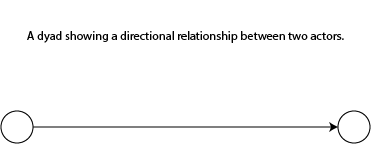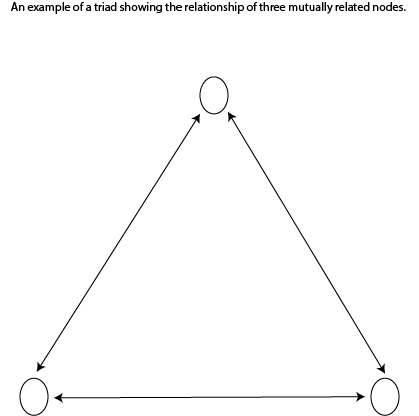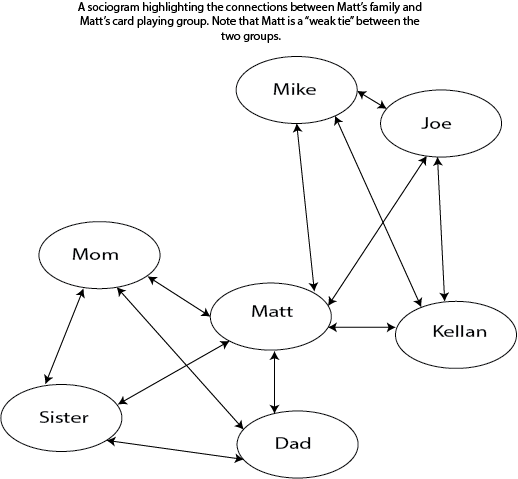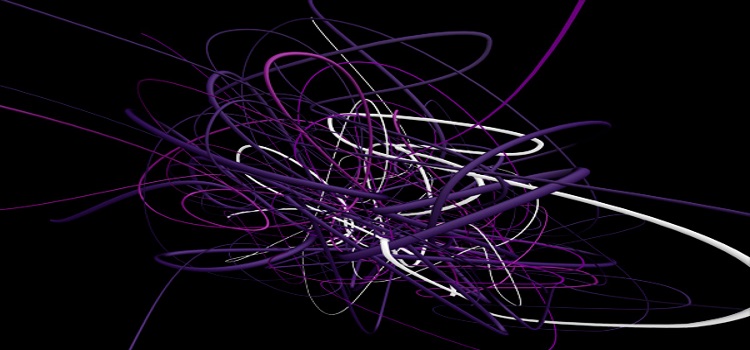What is a network?
What is the value of social network analysis? Charles Kadushin (2012) listed three points:
- Social network analysis allows researchers to see "what is hidden in plain sight" (p. 6) by tracing out connections between people and organizations.
- Social network analysis can show researchers the "conduits of both wanted and unwanted flows" (p. 8) of activity and information.
- Social network analysis demonstrates "the patterning of connections as both a cause and a consequence of human behavior" (p. 10).
These points demonstrate how powerful a tool social network analysis can be when mapping human and organizational behavior, culture, and communication.
 |
Social network analysis offers researchers a vocabulary of concepts they can use to think through the implications of a world that is socially networked. Readers here should be familiar with some of Kadushin's terms so that they can begin to understand how social network analysis is grounded within social science. The first term that needs to be defined is network. Simply put, "a network is a set of relationships" (p. 14). At its most basic level, a network consists of two people or organizations, called dyads. |
|
But add a third person or organization, and one gets a triad. In social network analysis, a triad has 16 possible forms based on how the people or organizations can be related to one another (p. 24). For example, a triad could consist of one manager and two employees, or three roommates, or a peer revision group with three students. |
 |
 |
Plotting out these relationships and extending them to involve more than three actors leads to what is called a sociogram—"the graph or diagram of a whole network" (p. 27). Sociograms are visuals that allow readers to better grasp the connections and relationships actors have with one another in a network. If there are many connections between actors, the social network is said to be "dense," whereas parts of the social network that have few connections are "structural holes" that are held together by "weak ties" (p. 27). To demonstrate these last two concepts, readers can think of two dense networks that an actor could have, one being a group of friends from college and the other being close family. Both groups are dense because the members of each group know each other and have complex relations with one another, but the two groups are only connected through the one actor, who is a "weak tie" (p. 27). When looking at this relationship on a sociogram, one would see a structural hole between the two groups because the area is only connected by one person. |
Lastly, there are three important concepts about the characteristics of social networks that social network analysis takes into account: 1) homophily, 2) propinquity, and 3) embeddedness. Homophily can best be explained by the adage "birds of a feather flock together" (p. 18). To be more precise, people's shared characteristics and qualities enhance the probability of a shared network, and "if two people are connected, then they are more likely to have common characteristics or attributes" (p. 18). Similarly, people who are connected "become more homophilous over time" (p. 19). Propinquity in regards to networks means that nodes are more likely to be connected if they are geographically close to one another. And embeddedness describes the way "networks are influenced by and related to cultural and social structural frameworks. And the converse holds true as well" (p. 40).
These select definitions provide a brief introduction to the concepts that create the framework of social network analysis. There are many more discussed in the book, and their implications are explained much further, with examples from studies on obesity, World War II veterans, "small world" studies, and many more (Kadushin, 2012). These examples help to illustrate how social networks enhance or impede connections between people.
